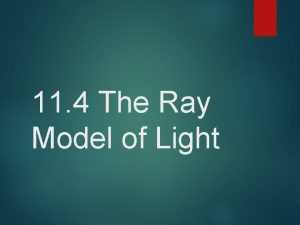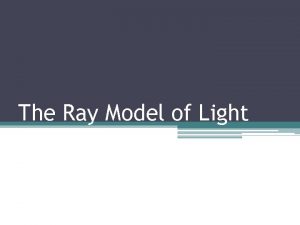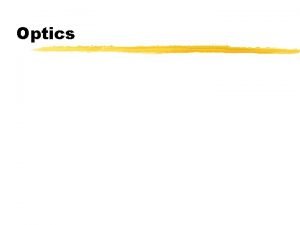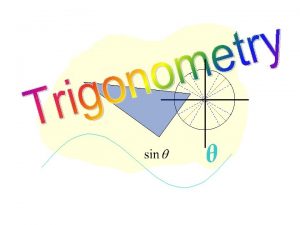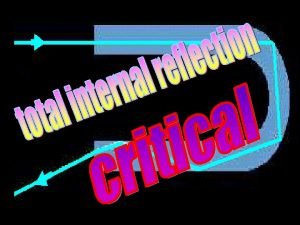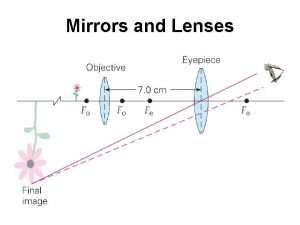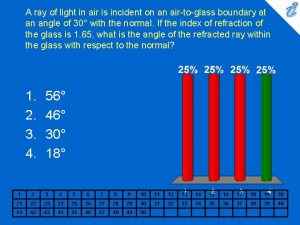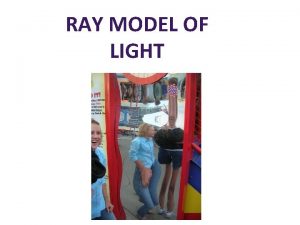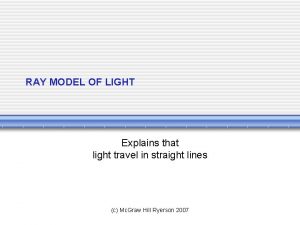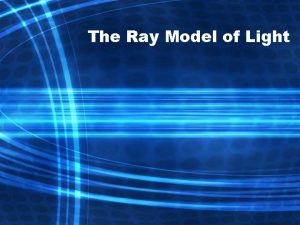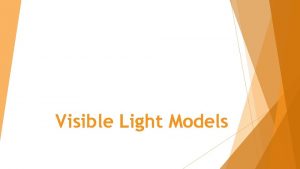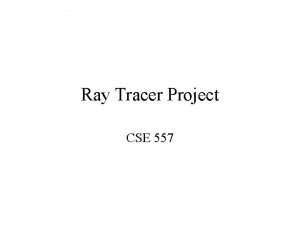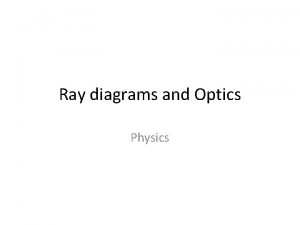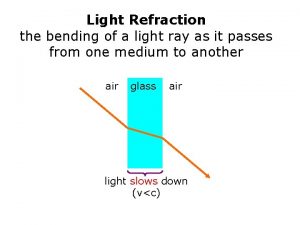The Ray Model of light The Ray Model














- Slides: 14

The Ray Model of light


The Ray Model of Light �Light is represented as a straight line, or ray, that shows the direction the light wave is travelling �You can use this model to show what happens when light strikes different materials.

Three things happen when light strikes a material… The light may be transmitted (pass straight through it) � The material is TRANSPARENT � What are some examples of materials that are transparent?

The light may be reflected (bounce off it) & scattered � The material is TRANSLUCENT � What are some examples of materials that are translucent?

The light may be absorbed (become “trapped” in it). �The material is OPAQUE �What are some examples of materials that are opaque?

Shadows �We can use the ray model to predict: 1. Where shadows will form 2. How large they will be.

�A ray diagram can be used to show the size of shadows is related to the distance of the object from the light source. �The closer the object is to the light source, the larger the shadow.

translucent opaque transparent

transparent transmitted opaque absorbed translucent scattered

The Law of Reflection �The angle of reflection equals the angle of incidence


�Incident Ray �The light ray that strikes the reflecting material �Reflected ray �The light ray that is bounced back (reflected) from a reflecting surface �Normal �An imaginary line drawn perpendicular to a reflecting surface at the point where an incident ray strikes the surface

�Angle of Incidence �Labelled i �The angle formed by the incident ray and the normal �Angle of Reflection �Labelled r �The angle formed by the reflected ray and the normal
 Light light light chapter 23
Light light light chapter 23 Into the light chapter 22
Into the light chapter 22 Chapter 22
Chapter 22 Ray model of light
Ray model of light Clearly explain what is meant by the term geometric optics
Clearly explain what is meant by the term geometric optics The ray model of light
The ray model of light The ray model
The ray model The ray model of light
The ray model of light Tan 30 degrees unit circle
Tan 30 degrees unit circle Ray casting vs ray tracing
Ray casting vs ray tracing When light travels from an optically denser medium
When light travels from an optically denser medium A light ray traveling obliquely to a convex mirror axis
A light ray traveling obliquely to a convex mirror axis A light beam in air is incident upon a still water surface
A light beam in air is incident upon a still water surface Electromagnetic spectrum definition
Electromagnetic spectrum definition Warming ray of light
Warming ray of light



